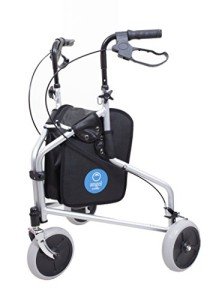20 Walking Aids Websites Taking The Internet By Storm
페이지 정보

본문
Walking Aids: Enhancing Mobility and Independence
Walking aids are necessary tools designed to assist individuals with mobility obstacles, allowing them to move freely and easily. These gadgets can significantly boost autonomy, enhance posture, lower the danger of falls, and boost overall quality of life. This post digs into numerous types of walking aids, their benefits, considerations for use, and suggestions for choosing the right aid. Additionally, a thorough FAQ area addresses typical queries about walking aids.

Kinds Of Walking Aids
Walking aids been available in different forms to deal with various requirements and choices. Below is a classified list of the most commonly used walking aids:
1. Canes
- Standard Canes: A single straight walking cane for basic support.
- Quad Canes: Canes with a four-pronged base for increased stability.
2. Walkers
- Requirement Walkers: Frame-like gadgets that offer support on all sides, great for those with minimal strength.
- Rolling Walkers (Rollators): Equipped with wheels, these enable users to walk with less effort and come with seats for resting.
3. Crutches
- Axillary Crutches: Used under the arms; suitable for short-term mobility issues.
- Forearm Crutches (Lofstrand Crutches): Designed for long-lasting use, they require grip strength and are lighter than axillary crutches.
4. Wheelchairs
- Handbook Wheelchairs: Require user effort to move, offering flexibility and independence.
- Electric Wheelchairs: Battery-powered options suitable for users with limited arm strength.
Benefits of Walking Aids
Walking aids use many benefits that contribute to enhanced mobility, safety, and self-reliance. Some key benefits consist of:
- Increased Stability: Walking aids offer extra points of contact with the ground, decreasing the threat of falls.
- Improved Mobility: They make it possible for movement over greater distances, enabling people to participate in social activities and day-to-day jobs.
- Pain Reduction: Properly fitted walking aids can minimize pressure on joints and reduce discomfort associated with various medical conditions.
- Improved Confidence: Using a walking aid can increase a person's confidence, encouraging them to explore their environment without fear.
- Posture Support: Aids assist maintain correct positioning and posture, minimizing stress on the back and hips.
Considerations When Choosing Walking Aids
Picking the right walking aid is crucial for safety and efficiency. Here are some elements to consider:
1. Specific Needs
- Evaluate the level of assistance required for mobility.
- Consider whether momentary or long-term assistance is needed.
2. Environment
- Evaluate the terrain and surface areas (indoor vs. outdoor) where the aid will be used.
- Ensure that the walking aid appropriates for stairs, ramps, or irregular surfaces.
3. Weight and Portability
- Evaluate the weight of the walking aid and if it can be transported easily.
- Lightweight options are preferable for those who may need to lift or stow the aid regularly.
4. Convenience and Fit
- Ensure the walking aid is adjustable and fits the user's height.
- Consider grips, armrests, or seats that supply comfort for extended use.
5. Spending plan
- Determine a budget for the walking aid while thinking about the quality and functions essential for the user's safety and convenience.
FAQs About Walking Aids
1. Who should use walking aids?
Walking aids appropriate for people recovering from surgical treatment, those with chronic discomfort, seniors experiencing balance problems, or anybody with a mobility difficulty.
2. How do I pick the best height for a walking aid?
When standing straight with great posture, the top of the walking cane or walker must align with the wrist bone. A health care expert can provide guidance during fitting.
3. Can I use a Walker With brakes on stairs?
While it's usually not safe to use a walker on stairs, some walkers are developed specifically for stairs with functions that boost stability. Constantly seek advice from with a physical therapist for tailored advice.
4. How can I preserve my walking aid?
Regularly examine for loose parts, wear and tear, and clean the device according to the maker's guidelines to make sure safety and longevity.
5. Do walking aids help with balance?
Yes, walking aids can supply the essential support and stability, helping to prevent falls and help with balanced movement.
Walking aids are indispensable gadgets that empower people with mobility challenges to preserve self-reliance and improve their quality of life. By understanding the different types of walking aids, their benefits, and vital considerations for selection, users can make educated decisions customized to their needs. Whether for temporary assistance or long-term use, the best walking aid can change day-to-day routines and improve overall well-being.
| Kind Of Walking Aid | Functions | Best For |
|---|---|---|
| Walking sticks | Single or quad bases | Moderate assistance |
| Walkers | Fixed or rolling alternatives | Lower body weakness |
| Crutches | Axillary or forearm models | Short-term mobility issues |
| Wheelchairs | Handbook and electric choices | Extreme mobility constraints |
Accepting the best walking aid can lead to newfound liberty and a more active lifestyle, promoting self-reliance and social engagement. As always, assessments with healthcare specialists can supply customized suggestions to make sure safety and effectiveness in utilizing walking aids.
- 이전글You'll Never Guess This Mental Health Services Private's Tricks 25.07.08
- 다음글The Under-Appreciated Benefits Of Buy Headset 25.07.08
댓글목록
등록된 댓글이 없습니다.

